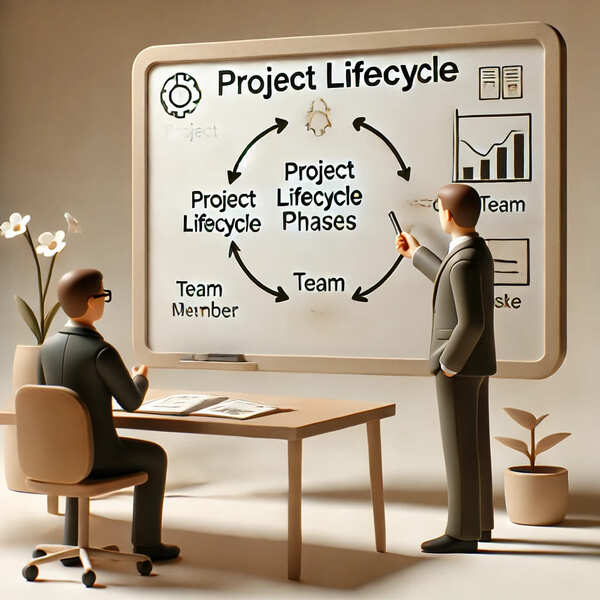Introduction
The project lifecycle is the backbone of any project management methodology. It outlines the stages a project goes through from initiation to closure. This module aims to provide a comprehensive understanding of the project lifecycle, its phases, and the key activities and deliverables in each phase. Whether you’re a seasoned project manager or a newcomer to the field, understanding the project lifecycle is crucial for the successful execution of any project.
Learning Objectives
By the end of this article, you should be able to:
- Understand the concept and importance of the project lifecycle
- Identify the key phases of a project lifecycle
- Recognize the activities and deliverables in each phase
- Understand how to transition between different phases
- Apply best practices for each phase of the project lifecycle
Why the Project Lifecycle Matters
Understanding the project lifecycle is essential for effective project management. It provides a structured approach that guides the project from start to finish, ensuring that nothing is overlooked. Each phase has its own set of objectives, key performance indicators, and deliverables, making it easier to manage and control the project.
- Key Takeaway: The project life cycle provides a roadmap that helps project managers navigate the complexities of a project from inception to completion.
Phases of the Project Lifecycle
The project lifecycle is generally divided into four key phases:
- Initiation: The project is defined at a high level. You identify initial stakeholders, resources, constraints, and objectives.
- Planning: Detailed planning includes scope definition, timelines, costs, quality, communication, risk, and resource management.
- Execution: The project plan is put into action. Resources are distributed, and team members carry out the project work.
- Closure: Finalizing all project activities, handing over deliverables, obtaining necessary approvals, and releasing project resources.
Key Takeaway: Each phase has its own set of activities and deliverables that must be completed before moving on to the next phase.
Activities and Deliverables in Each Phase
Initiation
- Activities: Stakeholder identification, initial risk assessment, feasibility studies
- Deliverables: Project Charter, Stakeholder Register
Planning
- Activities: Work breakdown structure, resource allocation, risk planning
- Deliverables: Project Management Plan, Risk Management Plan
Execution
- Activities: Resource management, stakeholder communication, quality control
- Deliverables: Project deliverables, performance reports
Closure
- Activities: Project evaluation, stakeholder sign-off, resource release
- Deliverables: Final project report, lessons learned
Key Takeaway: Knowing what activities and deliverables are expected in each phase helps in effective planning and execution.
Transitioning Between Phases
Transitioning between phases involves specific activities such as phase reviews, approvals, and documentation updates. These ensure that the project is ready to move to the next phase and that all stakeholders are aligned.
Key Takeaway: Smooth transitions between phases are crucial for maintaining project momentum and stakeholder alignment.
Best Practices for Each Phase
- Initiation: Conduct a thorough stakeholder analysis
- Planning: Use project management software for better planning and tracking
- Execution: Regularly update stakeholders through effective communication channels
- Closure: Conduct a post-project evaluation to gather lessons learned
Key Takeaway: Applying best practices in each phase enhances the likelihood of project success.
Conclusion
Understanding the project lifecycle is fundamental to project management. It provides the structure and framework within which a project progresses from an idea to a fully realized deliverable. By mastering the activities and deliverables in each phase, you can significantly improve your project management skills and increase the chances of your project’s success.



